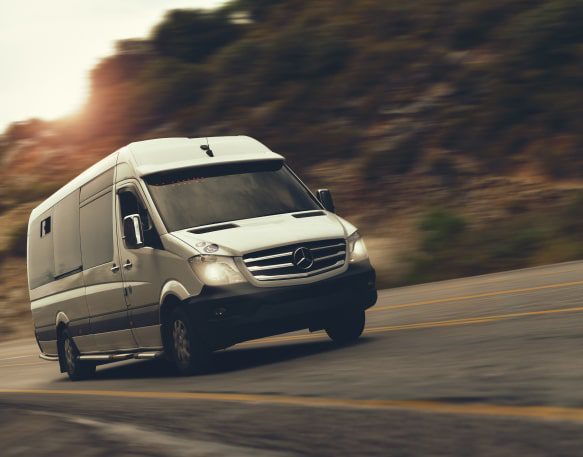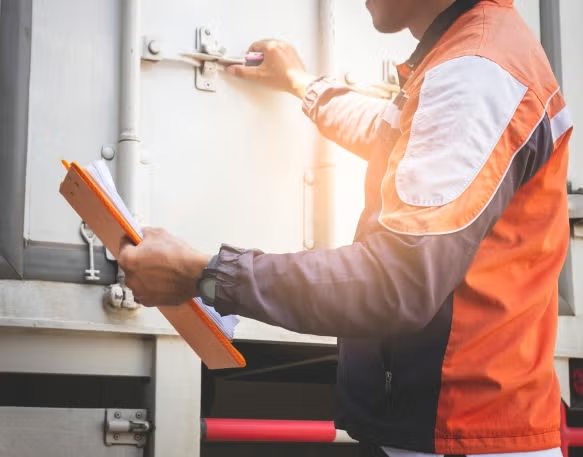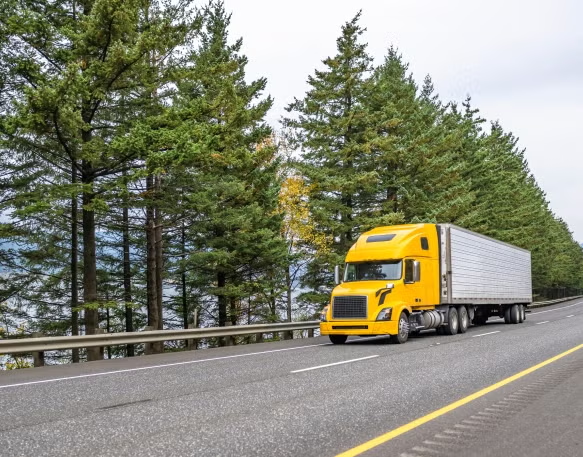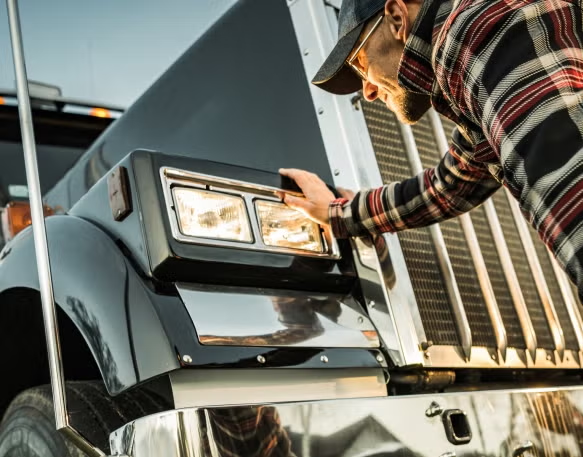If you’re thinking about entering the freight carrying world, there are a lot of routes you can take, and among those is starting your own sprinter van business. Whether you realize it or not, you’ve probably seen sprinter vans on the road a lot due to increased popularity over the past few years. It’s Amazon’s delivery fleet vehicle of choice, and for a good reason — sprinter vans have a wide range of options, making them one of the best vehicles for delivering loads of all shapes and sizes. From medical equipment and other time-sensitive materials to appliances and vehicle tires, sprinter vans are relied upon for their manageable size yet impressive hauling capabilities.
So what exactly is a sprinter van and how do you start your own sprinter van business? This guide will cover everything you need to know about how to become a sprinter van owner-operator and make your mark on the industry.
What Is A Sprinter Van?
A sprinter van is a lightweight commercial vehicle. Originally produced by Mercedes-Benz in 1995, since its successful launch in Europe in 1995 and its official American debut back in 2010, the sprinter name has become a blanket term used by many to mean commercial cargo van or crew van. Many makers are now producing sprinter-style vehicles that offer similar capabilities with an array of different configurations. These include the Ford Transit, Ram ProMaster®, and GMC Savana, in addition to the Mercedes-Benz vans.
With so many makes and models to choose from, those looking to enter the freight carrier industry have various options for selecting the right vehicle for their needs. Depending on the make and model you choose, the price, carrying & towing capacity, and features will vary.
If you want to get an idea of what you can expect from this vehicle class, here are some stats of entry-level sprinter vans that can serve as a good starting point:
Price
A new sprinter van or similar cargo van MSRP will typically be in the range of $29,000 for basic models and up to $66,000 for higher-end, luxury models. If you’re on the hunt for more budget-friendly options, you can browse used vans, speak with a dealership about leasing options, or look into obtaining a business loan to cover the cost.
Payload Capacity
Sprinter vans have a wide range of carrying capacities, averaging from 500 lbs to a staggering 5,000 lbs for the more rugged models — that’s a lot of cargo to carry!
Towing Capacity
Again depending on the model and configurations you choose, vehicles in this class can tow anywhere between 3,000 lbs and 10,000 lbs.
Dimensions
Light-duty vans are more compact than their counterparts and are great if you’re planning to operate in busy cities or looking to make a lot of light, successive deliveries. These generally have a height of 52 inches. So if you’re looking to haul taller items or want to be able to stand up straight in your van, opt for a higher roof option. Some of the tallest high-roof van options have a height of 110.4 inches, or a spacious 9.2 feet!
Why Start A Sprinter Van Business?
For those just getting into the carrier industry, a sprinter van is a great starter vehicle — especially because they don’t require a CDL to operate. Sprinter vans are robust yet easy to control, making them a powerhouse when it comes to transporting loads while still keeping navigation in tight spaces in urban areas simple. Plus, a sprinter van’s rear and side cargo accessibility gives you more flexibility when delivering freight than some other vehicles.
Additionally, with starting prices beginning as low as $29,000, brand-new sprinter vans can be a little easier to acquire compared to new trucking trailers, which can range in price from roughly $125K to $150K. This lower barrier-to-entry can be a major advantage to those new to freight transportation.
Beyond the ease of use and affordability of a sprinter van, being an owner-operator can be a truly rewarding experience that offers you flexible hours, the chance to be part of a growing industry, and an opportunity to meet people from all walks of life.
How to Start A Sprinter Van Business: Your Checklist
Now that you’re filled in on the what and why of starting a sprinter van business, let’s get into the exciting part — the how.
Outline Your Business Plan
Planning is a crucial step when starting your own business. Before you go out and purchase a van, take some time to do some thorough planning. One of the best ways to set yourself up for success when starting your own freight delivery company is by researching the market and understanding where you want to fit in. Do you want to be the sole driver of your company, or do you want to grow to run your own fleet eventually? Do you want to operate within state lines (intrastate) or travel across the country (interstate)? How will you pay for fuel?
Once you have a solid idea of what you want to do, you can start figuring out what you need and how much everything will cost.
Certifications & Expenses
After your business plan is in place, it’s time to consider what expenses you’ll need to cover both before you start your business and as you begin transporting freight. In addition to the price of your van, you’ll need a cash flow to pay for gas, vehicle maintenance or repairs, and insurance. If you plan to hire help, you’ll also have to calculate employee salaries and supplies.
Insurance
Insurance is crucial — not to mention required — as it will cover you from any liability or damages you may experience while you’re out on the road. Monthly costs will vary depending on the vehicle you’re driving, the cargo you’re carrying, your experience, and where you’re operating. Expect to spend at least $140–$245 a month or $1,700–$3,300 a year on commercial auto insurance.
You’ll also need cargo insurance for the freight you haul, which you can find through DAT’s partner, Loadsure. You can save up to 80% on costs by purchasing per-load insurance instead of getting a contract that can cause you to overpay. With per-load insurance, you’re only ever paying for the value of your current load. The best part is that getting cargo insurance through Loadsure is incredibly quick — you can get covered in under 60 seconds!
Authority & Permits
Before you begin driving, you’ll have to do a fair bit of paperwork to ensure you’re ready for operation and meet local and federal regulations. This includes:
- Obtaining your USDOT number.
- Getting a processing agent to file your BOC-3.
- Acquiring a motor carrier number (MC number) from the FMCSA (this is only necessary if you plan to drive beyond state lines). This will cost a one-time fee of $300.
If this sounds a bit daunting, know that you don’t have to go at this alone. Through DAT Authority, you can work directly with our team of specialists who will guide you through the application process and file all the necessary paperwork needed on your behalf. From your USDOT and MC number to International Fuel Tax Agreement (IFTA) and International Registration Plan (IRP) forms, we’ll take care of everything so you can focus on building your new business.
Finding Loads & Building Your Business
Once you’ve secured your carrier authority and the permits you need to start operating, you’ll need to find work. Rather than risk trying to find jobs through uncertified platforms, a sprinter van load board can direct you to trusted, well-priced freight designated for your vehicle type.
The DAT digital freight marketplace is one of the biggest load boards in the U.S., giving you access to freight across all lanes with thousands of new loads posted daily. You can even specify your vehicle configurations to take the guesswork out of finding sprinter loads that you know will fit your van’s dimensions.
The great thing about starting your own business is that, over time, you’ll make strong connections with other carriers, brokers, and shippers that will help you expand your network. As your business begins to scale up, you’ll need to consider new services to ensure your company can continue running smoothly. We suggest looking into DAT One, an all-in-one solution that can streamline your operations and provide you with the tools you need to offer high-quality service. Access your load board, track your network of partners using Priority Booking tools, and know that you and your drivers are getting paid fairly by seeing average lane prices in real-time.
Get A Head Start with DAT Freight & Analytics
At DAT, we understand the ins and outs of the freight industry and have designed tools and services we know can make working in the transportation business easier. No matter if you’re just getting started and are looking for help becoming a sprinter van owner-operator or you’ve been in the business for awhile and want to start scaling up — you can trust in the experts at DAT to get you to where you want to be.
We’ve helped thousands of carriers, brokers, and shippers find ways to grow, and we’re ready to help you. Check out all the resources DAT has to offer, and see how our suite of services can give you the head start you need to make the most of your new business!
Find the best sprinter van freight with DAT!
Once you start your sprinter van business, you need to start finding the best loads that get you on the road. The DAT load board is the best place to find quality sprinter van freight. As the largest freight marketplace in the industry, there are always new opportunities to discover. Sign up today!




